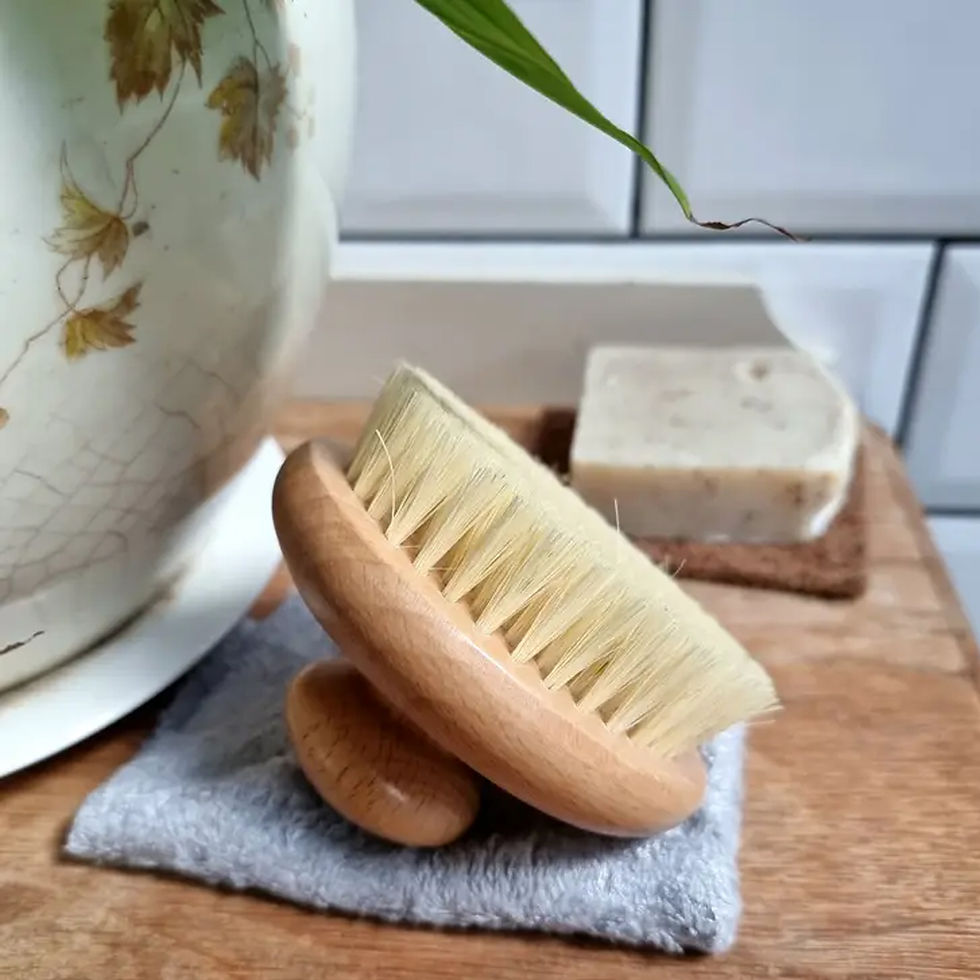The Truth About Dry Brushing: Benefits, Myths & Expert Advice
- dranataliamoore
- Jul 14
- 3 min read
By Dr. Anatalia Moore, GP & Cosmetic Dermatologist | Dr Anatalia Aesthetics, Manchester

Dry brushing has become a cult favourite in wellness and beauty routines, with claims of everything from glowing skin to reduced cellulite. But how much of it is truly effective? As a Manchester-based aesthetics clinic led by medically trained professionals, we’re here to break down the science, myths, and best practices around dry brushing.
What Is Dry Brushing?
Dry brushing involves sweeping a dry, bristled brush across the skin, typically before showering. It’s often touted for:
Exfoliating dead skin cells
Improving circulation
Supporting lymphatic drainage
Reducing cellulite (though evidence is weak)
What Are the Proven Benefits?
✅ Mechanical Exfoliation
The most scientifically backed benefit of dry brushing is mechanical exfoliation. Using a soft, plant-based bristle brush (e.g., jute or vegan Tampico fibre) helps gently remove dead skin, revealing smoother, brighter skin.

🧴 Tip: Natural bristles are ideal – avoid synthetic brushes which may be too harsh or ineffective.
Dry Brushing vs. Chemical Exfoliation: Which Is Better?
As a GP and Cosmetic Dermatologist, I typically advocate for chemical exfoliation using ingredients like alpha hydroxy acids (AHAs) or retinoids. These actives gently dissolve the bonds between dead skin cells without physical abrasion, making them better for sensitive or compromised skin. Investing in a great quality product for your body is as important as looking after the skin on your face.
If you are looking to solve more marked textural concerns, laxity or scarring I would also look towards RF-Microneedling, SkinPen Microneedling, HIFU and biostimulators to offer deeper. healing
However, occasional gentle dry brushing (1–2x weekly) can complement a skincare routine if your skin is healthy and well-hydrated.
Dry Brushing Best Practices
To maximise benefits and avoid skin irritation, follow these medically recommended steps:
✅ Before the Shower, Never After
Brushing damp or heated skin (post-shower, after shaving, or during flare-ups) increases the risk of microtears and inflammation.
✅ Brush From Limbs to Core
Use long, sweeping motions toward the heart, particularly around the groin and underarm areas, which are key lymphatic drainage points.

✅ Adjust Pressure by Area
Firmer pressure: Feet and elbows
Gentle pressure: Abdomen, chest, inner thighs
✅ Follow With Nourishing Moisture
Post-shower, apply a hydrating body lotion or cream rich in:
Ceramides
Niacinamide
Hyaluronic acid
Fatty acids
Panthenol

Who Should Avoid Dry Brushing?
Dry brushing isn’t for everyone. Avoid if you have:
Eczema or dermatitis
Psoriasis
Extremely dry or dehydrated skin
Active acne or broken skin
These conditions compromise the skin barrier, and brushing can worsen irritation or even introduce infection, especially if your brush isn’t cleaned regularly.
Circulation & Lymphatic Benefits: Fact or Fiction?
The warming sensation from dry brushing is real – it increases local blood flow, similar to rubbing your hands for warmth. This can promote temporary radiance and may contribute to improved delivery of nutrients and oxygen to the skin.
As for lymphatic drainage, the light pressure may help stimulate fluid movement, particularly when done toward major drainage zones. However, the effects are mild and mostly anecdotal. For true lymphatic issues, seek medical advice from your healthcare provider or book a consultation with our expert team.
When’s the Best Time to Dry Brush?
There’s no single “best” time – it depends on your schedule and preference:
Morning: Energising and invigorating
Evening: Calming, mindful ritual
Either way, pairing dry brushing with a nourishing skincare routine is the real key to long-term results.

Final Thoughts from Our Manchester Skin Experts
Dry brushing can be a valuable part of a well-rounded skincare routine — if done gently and with awareness of your skin’s condition. I would always recommend investing in good moisturisers for your body, as these can both hydrate and can safely include low dosages of chemical exfoliants that will help achieve a smooth and soft texture to body skin. Adding in other treatments for the body such as microneedling and RF microneedling can really ramp up benefits particualry for more marked textural concerns and boost hydration and collagen with Profhilo or Polynucleotides.
At my Manchester aesthetics clinic, we believe in a science-backed approach to skin health. Whether you’re exploring exfoliation, concerned about cellulite, or building a skincare plan that works for your unique needs, I'm here to help.
💬 Book a Skin Consultation Today
Looking for expert guidance on skincare and professional treatments?📍 Visit me at Dr Anatalia Aesthetics, or call 07999 361947 to book your consultation.







Comments